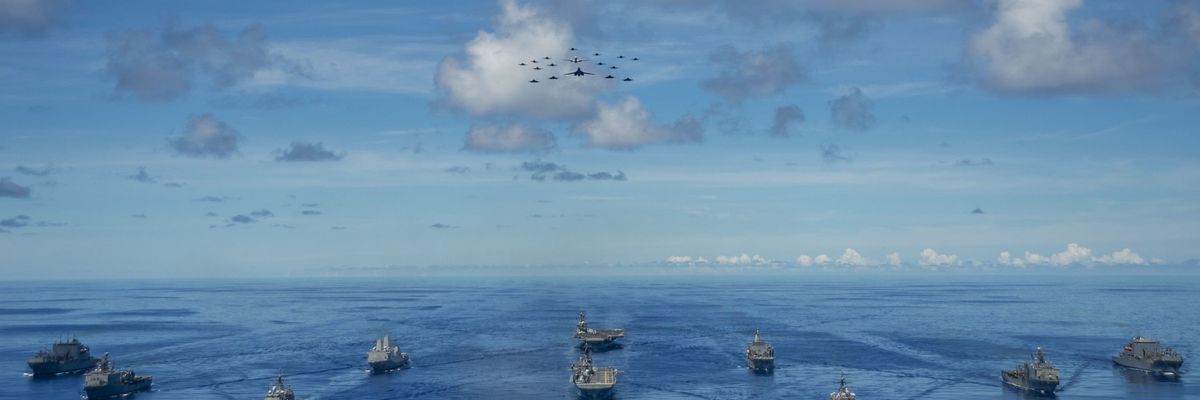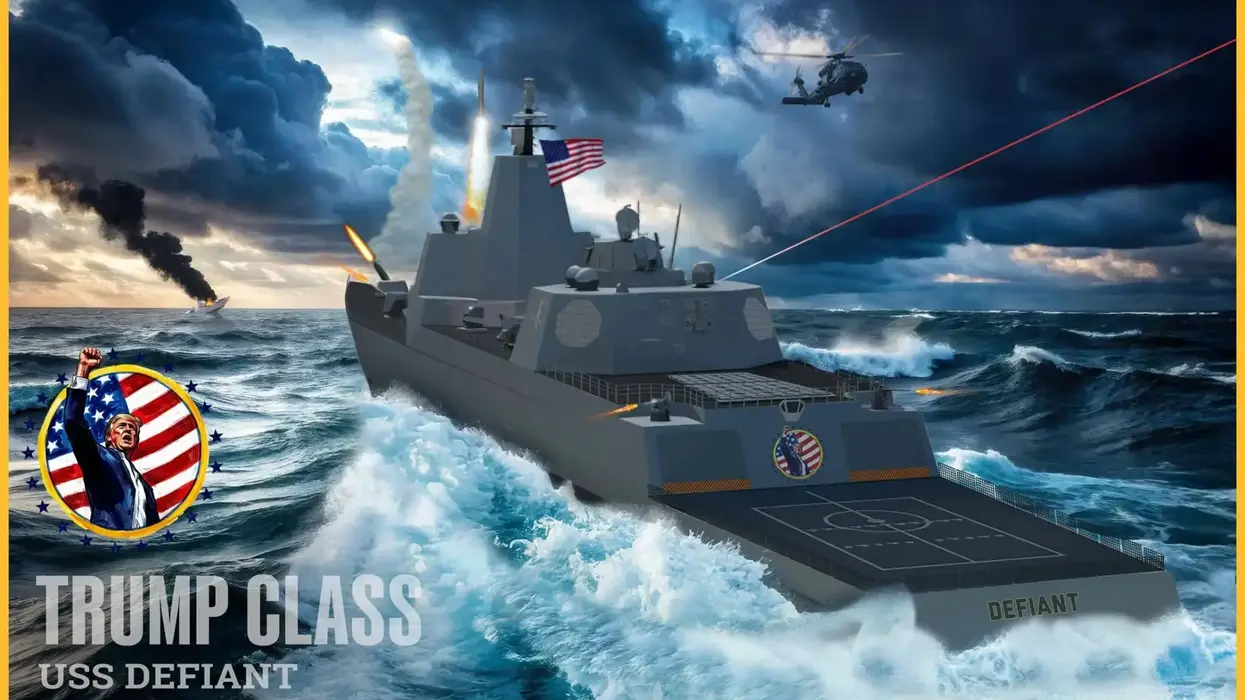It seems to run in the American DNA. For as long as I’ve been involved in U.S. foreign policy — as a CIA operations officer and a long-term CIA forecaster, and later at a prominent think tank — I perceive remarkably little change in that one deep-seated, almost unconscious presumption of basic American innocence, that the U.S. mission in the world is fundamentally benign. It pervades all our public utterances. It is dangerous.
I have no wish to launch into a litany of American sins, failures, or mistakes by omission, or more often commission, that have by almost any measure been disastrous for so many foreign countries “visited” by U.S. military operations. The list is long and well known — Iraq, Afghanistan, Syria, Libya, Pakistan, Somalia, indirectly in Yemen in most recent times.
Acts of omission include neglect of the half-century running sore of Israel’s occupation of Palestine and friendship with unsavory dictators because they “serve the U.S. national interest,” while publicly stressing America’s (cherry-picked) commitment to democracy overseas. China oppresses Uighurs, bad. India oppresses Muslims in Kashmir, no comment. Hypocrisy abounds. But I’m writing about something even simpler.
I am baffled by the kind of American mindset that, seemingly without guile, simultaneously maintains two quite incompatible views of the U.S. role in the world.
Premise One: With the collapse of the Soviet Union in 1991, Washington boastfully proclaimed itself the “world's sole superpower.” The United States at once gained the ability — even the right — to exercise unrestricted intervention, and with military force, anywhere in the world. No region is ever deemed too insignificant, too distant, too small not to fall at some point within the framework of a “major U.S. national security interest.” Unsurprisingly, it is probably this self-arrogated license, this global sheriff’s badge, that marks the beginning of the disastrous decline of U.S. foreign policy ever since.
But it’s the second accompanying belief or premise that is the stunner: The United States, so goes the self-narrative, has simply been working steadfastly to maintain global stability and a global “order” — an order that is supposed to represent a global good for all. While engaged in this selfless task, crocodiles have been nipping at our legs wherever we go. Consequently, as we engage in this self-appointed task, we find ourselves constantly being “challenged,” or “threatened” by other states or groups that do not seem to recognize or acquiesce in the universal goodness of Pax Americana.
So, think about it: how can the United States exercise supreme and unchallengeable power around the world on the one hand, and yet simultaneously not provoke negative reactions from others? You can’t be the most powerful player on the block — or what the U.S. military often tellingly calls its global footprint” — and yet not expect strong reactions from those affected by it.
Again, I’m not even trying to assess how good or bad, how generous or harsh, how wise or foolish U.S. actions have been. It’s simply the perception in our eyes that we are nearly always the aggrieved party facing negative or ungrateful reactions.
So, we read again and again about the endless array of challenges we face: our media talks non-stop about how Washington must meet the "Russian challenge," "the Iranian threat," "the Chinese threat,” “the Islamic extremist challenge,” etc. But how often do we ask the question, why do they present a threat?
Some political scientists might simply suggest that any two major powers are destined to clash. Yet any such clash still represents a choice by their national leaderships. Why were Britain and France sworn enemies for centuries until one day they weren’t? Why were France and Germany seen as "natural enemies" for over a century and then suddenly decide after World War II they didn’t have to be? Some might respond that the game changed because new “enemies" cropped up to replace old ones.
Maybe so. But we must acknowledge that we are always making conscious choices and decisions about who we select as the enemy du jour based on our assessment of what serves our “national interest,” a phrase routinely invoked by foreign policy specialists and politicians. But “national interest” tends to be a highly subjective affair that is eminently debatable. In fact, determining just what are our true national interests is what foreign policy debate is all about. And the answer depends on your worldview, your ideology.
One problem with being the “world's sole superpower” is that any challenge to one's hegemony from any quarter identifies the challenger as an enemy, or potential enemy. Hegemony finds any challenge insufferable. It has been an integral part of Washington’s worldview for many decades now. Any government that resists U.S. hegemony should ideally be intimidated, overthrown or eliminated. Cuba, Nicaragua, Iran, Syria, Egypt in the day, China, Russia, Venezuela — it’s hard to get off that enemy list when you actively assert your independence from Washington.
For these reasons, then, I find myself deeply disturbed when, within President Biden’s brand-new foreign policy team, we find officials still darkly invoking the “threats" posed by other countries. Mere invocation of the word "threat" is all it takes. The charge eventually becomes axiomatic. China? Sure, obvious threat, no need to think about it. Everybody knows Russia is a black hat. Everybody knows that Iran is a “malign” actor.
But we seem unwilling to consider for a moment just how we arrived at these assessments, however accurate or inaccurate. As the world’s greatest military power, should we even wonder whether U.S. policies towards Russia since the Soviet collapse had anything to do with Moscow’s policies and views of the United States? This question seems out of bounds in the mainstream media. And, in our tensions with China, is it worth considering what a timeline of relations might show about a possible two-way street of provocation? Is Iran inherently anti-American, a stereotype that has been perpetuated over decades? Was there no earlier formative background worth considering?
This is why our diplomats, armchair strategists and pundits should at least be reading the “enemy press” for a more nuanced view of how we appear to others. (Or do we instinctively know it’s all propaganda or “fake news?”) Might not our nation be served by periodically reprinting editorials from the Russian, Chinese, or Iranian media — just out of curiosity as to how they see things? Or do we fear contamination of our supposed purity of vision and beneficence?
Strikingly, Washington’s latest favorite interpretation of why relations with China are poor is because we were somehow guilty of an “overgenerous assumption” that, if we were nice to Beijing, then they would become just like us. We deceived ourselves; we were naïve. It’s a fairly self-serving argument: if we bear any blame for bad relations with Beijing, it is because we were too nice. Well, no more Mr. Nice Guy.
I’m not suggesting that the answer to all these questions invariably comes down to “blame America.” I’m just suggesting that maybe we should be a little less utterly self-absorbed, self-righteous and self-referential to consider that maybe it takes two to tango, or not tango.
Sadly, sole superpowers are never going to welcome the rise of any competitor in any arena; it nearly automatically becomes an official "threat." There seems to be no other way to look at the world except through this lens of American exceptionalism and the divine right of American leadership. Not to mention the massive military-industrial complex and the Beltway security bureaucracy that have a vested interests in sustaining this worldview. How do we ever wriggle out of these deeply ingrained habits of sole superpowerdom? Frankly, I’m not sure it can be done, short of a massive shock to the system that compels a rearrangement of our perceptions and priorities, including budgets. I’m not holding my breath.
















